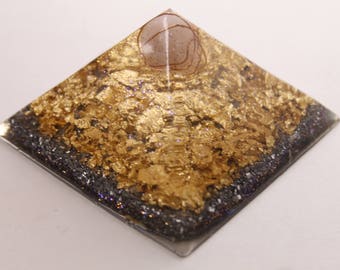Whether you live in an apartment or house, or you just need to ensure that your house is free of EMFs, there are a number of methods to reduce exposure. One of the easiest is to reduce your electronic device use. It is also possible to use EMF block paint to stop EMF radiation from entering your house. Another way to shield your home against EMF radiation is to use a RF shielding canopy. This is a fabric made of net that has EMF shielding. It is utilized to block EMFs from entering a space. Another option is to get your home fitted with an enclosure that is conductive. These devices are called Faraday cages.
Several studies have shown that the non-ionizing RF EMF can cause antiproliferative effects on HCC cells. The mechanism that drives AM RF EMF's anticancer activity in vitro is believed involve down-regulation in cancer-related stem cells. This could explain the long-term response seen in some patients with advanced HCC. But, the reason for AM EMF's effects on patients with cancer is not yet clear.
Effects from AM RF EMF on HCC tumour growth in vivo were examined in mice. https://paste1s.com/notes/NXZOCRJ5 were split in three different groups. First, the group that was unaffected to RF EMF. Another group of participants was subjected to RF EMF at the same frequency to the frequency used by humans. Third group members were exposed the RF EMF in HCC-specific frequencies. The effect of HCCMF on the tumours was assessed against the effect of RCF. The results showed that the cancers treated with HCCMF showed significant shrinkage. However, block emf radiation treated with RCF showed no evidence of tumour shrinkage.
The mechanism of cancer-specific AM RF EMF may be due to the fact that tumor cells require Cav3*2 T-type voltage calcium channels for proliferation and down-regulation. AM RF EMF's antiproliferative effects on HCC cells is mediated by CACNA1H the protein which mediates tumour-specific Ca2+ influx. The results suggest that CACNA1H could have wider implications for diagnosis and treatment of various cancers.

The tumors in those in the group that were unaffected EMF from radiofrequency, and fed a normal mouse diet. The tumours in HCCMF HCCMF group were treated with Huh7 cells after they were 5 to 7 weeks old. The tumors were then killed after they had a high burden.
The tumors of the three groups showed distinct growth curves. The HCCMF-treated tumors showed a significant decrease in tumour size after 8 weeks. However, the tumours which were treated by RCF showed no shrinkage. The difference was significant. The tumours treated with RCF were able to show necrosis, which is common in tumors that have been exposed to RCF. The possibility is that the necrosis was caused by the lack of oxygen in the more invasive tumours.
In summary, the results indicate an AM-RF EMF has anticancer activity in vitro and in the vivo. Several studies have shown the fact that AM RF EMF produces measurable shrinkage of tumors within HCC patients. There is a possibility that AM RF EMF causes these effects through CACNA1H, a protein involved in tissue-specific Ca2+ influx. In addition, AM RF EMF may exert a sustained effect on the development of HCC tumors in living tissue.
